 |
 |
 |
| |
Decreased Myelin Content and Cognitive Performance in Adults with Perinatal HIV
|
| |
| |
CROI 2022 Feb 11-16
Payal B. Patel, MD1, Alyssa Vecchio, MD2, Lydia Aoun-Barakat, MD3, Thor Wagner MD 4, Ann Melvin, MD, MPH 4, Margaret Green, MD, MPH1, Jennifer Chiarella3, Shannon Kolind, PhD 5, Michael N. Hoff, PhD1, Adam Dvorak 5, Irene Vavasour , PhD 5, Serena Spudich, MD, MA3, Christina Marra, MD1, Robert Paul, PhD6, Swati Rane, PhD1
1University of Washington 1 Seattle, WA, USA, 2University of New Mexico 2 Albuquerque, NM, USA 3Yale University 3 New Haven, CT, USA, 4Seattle Children's Hospital, Seattle, WA, USA, 5University of British Columbia, Vancouver, BC, Canada, 6Missouri Institute of Mental Health, St. Louis, MI, USA
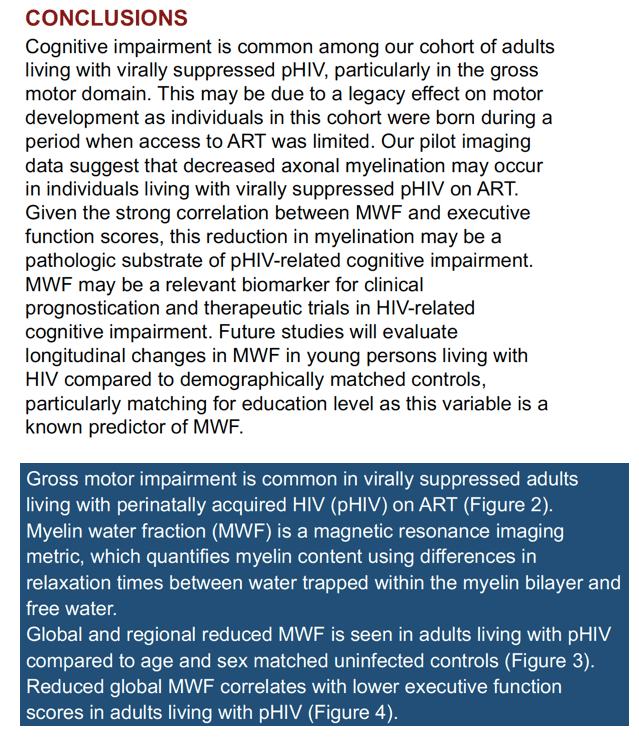
Motor dysfunction is a complex interaction of brain injury location, developmental plastic adaptation, and multiple physical factors over time such as weakness, dexterity, tone, musculoskeletal issues, and factors inherent to the individual child.
Motor Impairment is a major cause of physical disability and includes muscle weakness and fatigue, impaired sensation and poor balance, and muscle contracture and spasticity - all of which need to work if we are to undertake the usual range of daily activities.
https://www.neura.edu.au/research-centre/motor-impairment/
https://motorimpairment.neura.edu.au/
Pathological changes of certain areas of the brain are the main causes of most motor disorders.[4] Causes of motor disorders by genetic mutation usually affect the cerebrum.[5] The way humans move requires many parts of the brain to work together to perform a complex process. The brain must send signals to the muscles instructing them to perform a certain action. There are constant signals being sent to and from the brain and the muscles that regulate the details of the movement such as speed and direction, so when a certain part of the brain malfunctions, the signals can be incorrect or uncontrollable causing involuntary or uncontrollable actions or movements.[4]
https://en.wikipedia.org/wiki/Motor_disorder

Motor impairment is the partial or total loss of function of a body part, usually a limb or limbs. This may result in muscle weakness, poor stamina, lack of muscle control, or total paralysis. Motor impairment is often evident in neurological conditions such a cerebral palsy, Parkinson's disease, stroke and multiple sclerosis.
Neural interfaces have been explored to restore functionality for severely motor-impaired individuals. Implanted devices in the area of the brain's motor cortex sense brain states, and the interpreted signals are transmitted to a computer. With training, users develop some command over objects in the environment, which could be applied to such basic efforts as communicating or moving a motorized wheelchair.
https://www.neuromodulation.com/motor-impairment
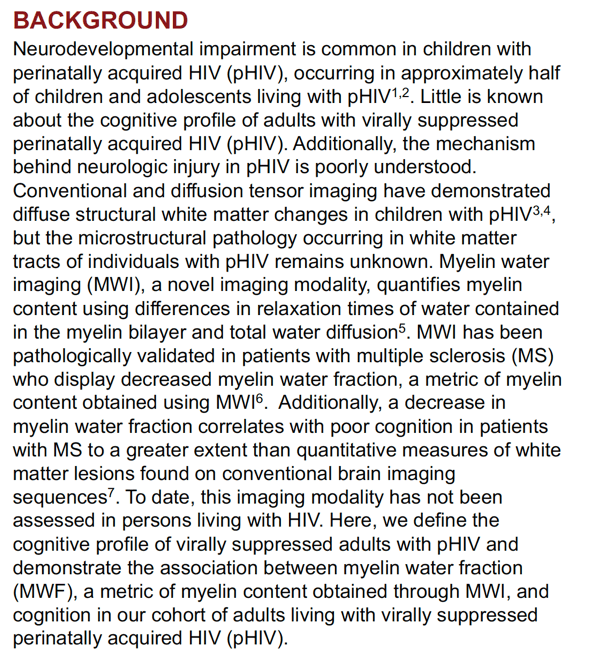
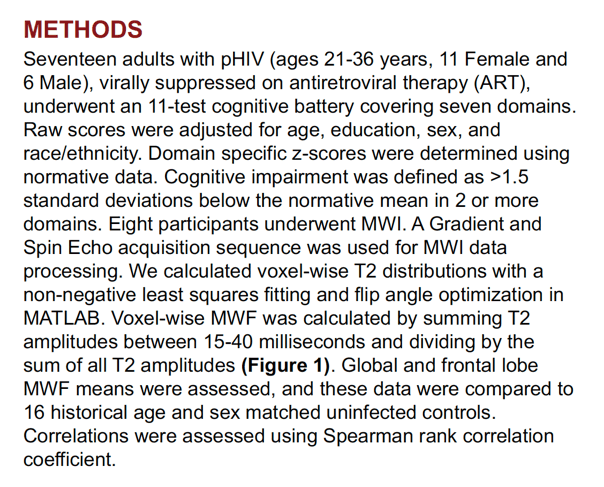


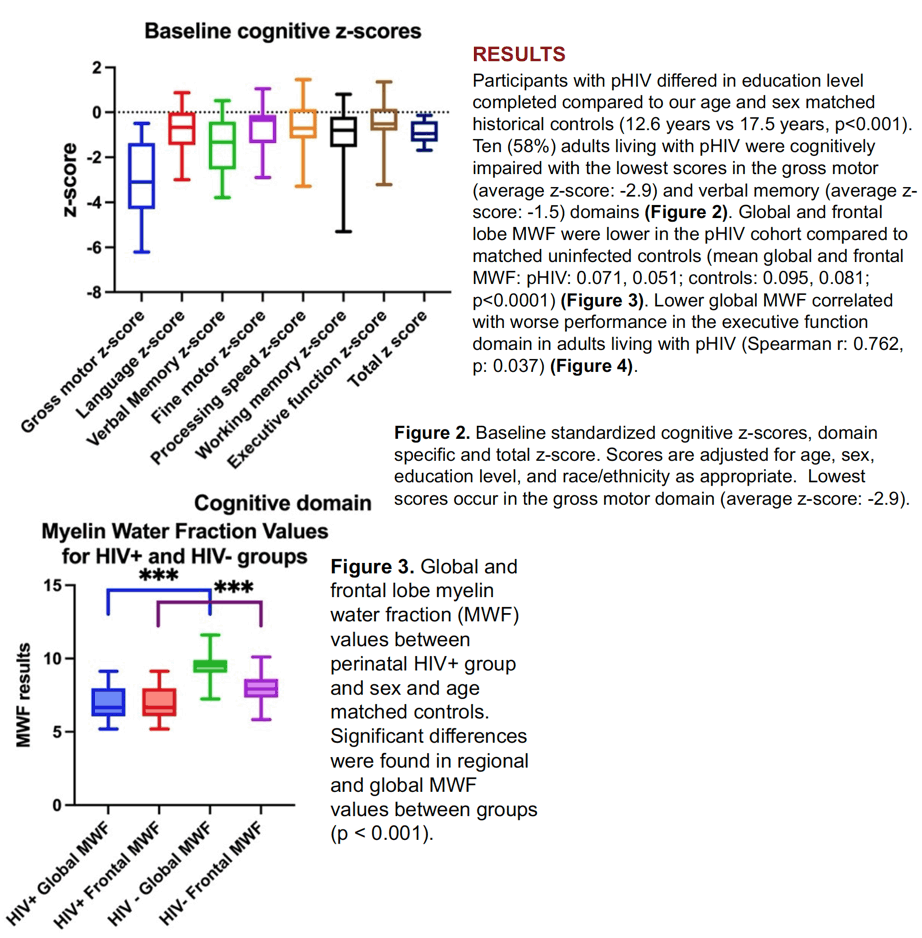
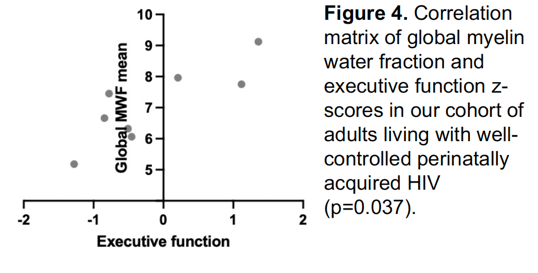
References: 1. Govender R, Eley B, Walker K, et al. Neurologic and neurobehavioral sequelae in children with human immunodeficiency virus (HIV-1) infection. J Child Neurol 2011; 26(11): 1355-1364. 2. Phillips N, Amos T, Kuo C, et al. HIV-Associated Cognitive Impairment in Perinatally Infected Children: A Meta-analysis. Pediatrics 2016; 138(5). 3. Ackermann C, Andronikou S, Laughton B, et al. White matter signal abnormalities in children with suspected HIV-related neurologic disease on early combination antiretroviral therapy. Pediatr Infect Dis J. 2014;33(8):e207-212. 4. Hoare J, Fouche JP, Spottiswoode B, et al. A diffusion tensor imaging and neurocognitive study of HIV- positive children who are HAART-naive "slow progressors". J Neurovirol. 2012;18(3):205-212. 5. Laule C, Moore GRW. Myelin water imaging to detect demyelination and remyelination and its validation in pathology. Brain Pathol. 2018 Sep;28(5):750-764. 6. Laule C, Kozlowski P, Leung E, Li DKB, Mackay AL, Moore GRW. Myelin water imaging of multiple sclerosis at 7 T: correlations with histopathology. Neuroimage. 2008;40(4):1575-1580. 7. Abel S, Vavasour I, Lee LE, Johnson P, Ristow S, Ackermans N, Chan J, Cross H, Laule C, Dvorak A, Schabas A, Hernández-Torres E, Tam R, Kuan AJ, Morrow SA, Wilken J, Rauscher A, Bhan V, Sayao AL, Devonshire V, Li DKB, Carruthers R, Traboulsee A, Kolind SH. Associations Between Findings from Myelin Water Imaging and Cognitive Performance Among Individuals With Multiple Sclerosis. JAMA Netw Open. 2020 Sep 1;3(9):e2014220
|
| |
|
 |
 |
|
|